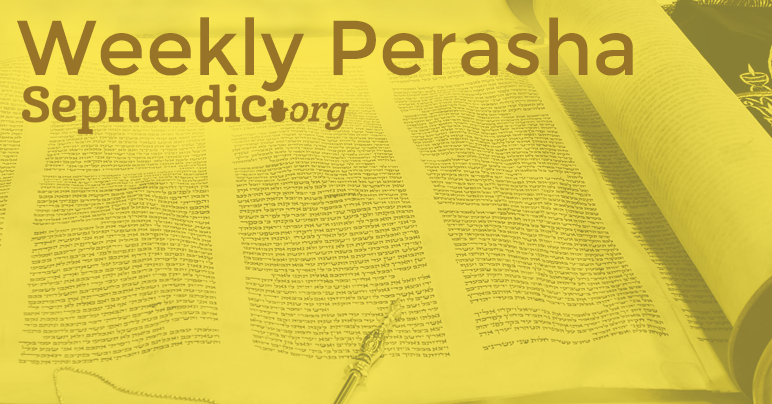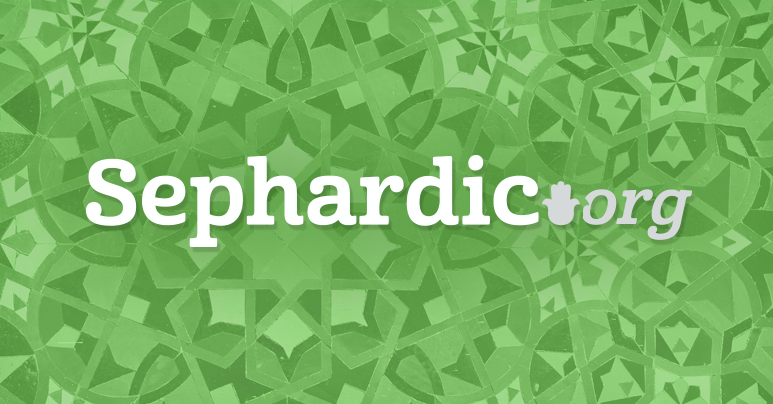
HA'AZINU - ON THE CUSTOM OF KAPAROT -
The 7th verse of the Song of HaAzinu is I believe a call for us to seek insight into our customs. "Ask your father and he will make it vividly realistic to you - your elders who are the scholars of the nation and they will explain it to you." This is all the more true as the approach of our Sages in regards to "custom" are wide ranging. For example it has been prescribed numerous times in our oral tradition (TJ PES 4:1) that one should not deviate from the custom of the place nor from that of his ancestors. On the other hand we are warned (SOF 14:16) that the saying that a custom annuls law applies only to a valid one; while a custom without support is nothing but an error in reasoning. Furthermore we know that our Rabbis have often attempted to prevent foolish customs to penetrate society - especially when suspected of having a foreign origin. With this I believe it behooves us to investigate and ask the Elders about the custom known as Kaparot. We should begin by learning its origins in Rabbinic literature, then to review it via the perspective of Maran Shulhan Arukh and finally to appreciate why and under what limited circumstances it was validated by R. HaAri. These limitations - as well as a new concern that has crept up upon us - should be set before one who decides to proceed and follow this custom.
ORIGINS OF KAPAROT
The custom does not appear in the Talmud. It does show up in Geonic literature. The most famous is a teaching in the name of R. Natronai Gaon (Hemda Genuza 93). "On the eve of Yom Kippour chickens would be slaughtered according to the family count - accompanied with the statement that - this instead of this - this is exchanged for this... The chickens would be distributed to the poor and serve as a כפרה - While most Rishonim accepted this tradition - we know that the Rashba (1:395) preached against it. Some of the students in his study hall said that the custom had been validated in their communities - with the Rabbi even acknowledging that it had been sanctioned by R. Hai Gaon. Nevertheless he considered the custom as belonging to "the ways of the Amorites" which could be suspected as having idolatrous origins. Undoubtedly he was influenced by his teacher Ramban who also was reported (OH) as having rejected it. On the other hand many other early authorities apparently viewed it positively. In fact Rashi (Shabbat 81) cites Geonic responsa in his commentary that the Talmud makes reference to the use of certain flowerpots in a practice reminiscent of the custom of Kaparot (MA 425:3) "On the eve of Rosh Hashana each child would take the pot that had been designated for him, circle it over his head seven times reciting the formula זה תחת זה - Similarly others such as the Rosh,Tur, Ohr Zarua, and Mordekhi were also ok with it - apparently basing themselves on the view of the Geonim.
RULING OF MARAN - SHULHAN ARUKH VS REMA
While Maran rules (SA OH 605) that one should refrain from this custom because we are suspect as to the concerns of the Rashba. (BY IBID). Apparently however - the Sephardic authorities who succeeded Maran did not share similar concerns (Shulhan Govoa- Eres Hayyim Sithon) and did not reflect this in their commentaries to the codes. The Rema the leading authority of the Ashkenazim validates the custom and adds in the name of the Maharil that after the Shehita one can redeem the chickens value in money and send that to the poor. This attitude towards Kaparot continued amongst the Ashkenazim with two additional expansions. The Mishna Berura cites the Peri Megadim that if there is a danger that the Shohatim might come and cause forbidden nevelot then there is a leniency to slaughter the chickens a day or two prior to the eve of Yom Kippour. Evidently due to the suspect of Nevelot even Sephardic authorities allowed the people to begin Kaparot days prior to Yom Kippour eve ( Mo'ed Lekol Hai 15:47 and Sede Hemed YK). The Haye Adam (144:4) writes that in cases where suspected nevelah is a concern - Money can be used in place of a chicken - not merely as a redemptive value.
THE CUSTOM OF R. HAARI
It is obvious that proliferation of the Minhag amongst the Sephardim was not that they favored the ruling of Rema over that of Maran - rather it resulted from its validation by R. HaAri. R. Hayyim Vital writes (SH - YK) that his teacher was zealous in performing the Kaparot. He was particular that it be done at Ashmoret following the recital of Selihot which preceded dawn or עלות השחר - on the eve of Yom Kippour which is the 9th day of the 10 days of Teshuva. The secret of the matter is to subdue dinim - as the chicken is called גבר -(Yoma 20) associated spiritually with the 5 גבורות in The יסוד of the הנוקבא - it is to be slaughtered specifically on the 9th day. Parallel this is the שעיר that is sent to the desert on the 10th day. This goat is related spiritually to the גבורות that are in the מלכות of the נוק׳ - So on the 9th day we sweeten judgement related to Yesod via Kaparot and on the 10th day (YK) we sweeten judgement related to Malkhut via the Se'ir sent to Azazel. The former in order to accomplish its intended goal must take place at Ashmoret of the morning in order to arouse the mercies needed to sweeten these judgements.
WHAT ARE THE CONCERNS
These limitations of R. HaAri - namely that it must take place at Ashmoret of the 9th day - put the later Sephardic authorities in a quandary. They realized it was not possible to meet this criteria in the new reality - with the masses desiring to take part in the ceremony. While the Ben Ish Hai allowed the 30 slaughterers of Baghdad to begin on the eve of the ninth - others (R. Hayim Palache) allowed the Kaparot to begin even days earlier. In fact today the majority of the masses have favored the new custom advocated by the Haye Adam (144:4) an Ashkenaz authority - to use Money in place of Kaparot. Anyone who knows the secret of the matter would surely question these deviations from the ruling of R. HaAri. I realize that the authorities are concerned with the people throwing out the baby (laws) with the bath water (Kaparot at the incorrect time) if they are limited in when they can perform the ceremony. In our generation there is a new concern with what precedes the ceremony. We must insure that there is no צער לבעלי חיים - undue suffering to the animal which at least according to Rav (Shabbat 128 - BM 32) is a Torah law. Are the chickens suffering by not being fed for days? Are they being cooped up for unusually long periods in the crates? Furthermore one cannot claim that this has nothing to do with us who are just showing up.. We must be concerned with the Talmudic (Mishna Shevi'it 5:9 - Gittin 5:9) teaching that one should not aid a transgressor.
CONCLUSIONS
Those who follow the teachings of R. HaAri should do Kaparot prior to עלות השחר - on the eve of Yom Kippour in order to sweeten judgements of that day. Any other time just doesn't accomplish its intended task. Money does not appear to replace a chicken to sweeten Gevurot. Of a bigger concern is the "possibility" that preceding the slaughter there might be a situation of a biblical (Rav) prohibition of causing undue pain to animals. Hence - prior to moving forward with Kaparot the way it is performed in our times - one must seek proper Rabbinic counsel and not simply follow the masses. This is especially so that if not done correctly it might also be included in actions that are similar to "the ways of the Amorites" - Again my intent is not to halt the practice but merely to make us aware of these concerns. In moving forward we need to look to האזינו - which as we can see from the context is our protection from עבודה זרה - as it warns in verse 17 - they sacrificed to demons who were non gods - deities they never knew. This verse must be preempted by that found in verse 7 - "Ask your father and let him tell you - and your grandfather who will explain it".
Shabbat Shalom Victor Bibi








